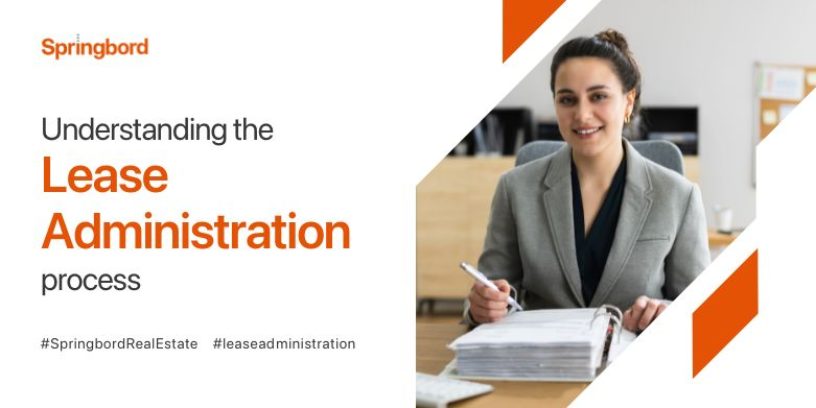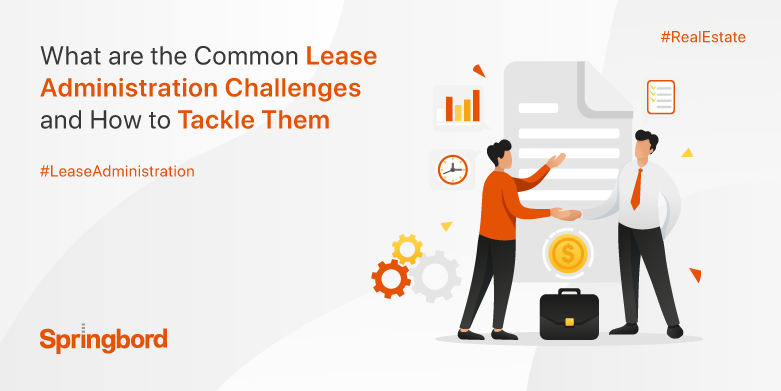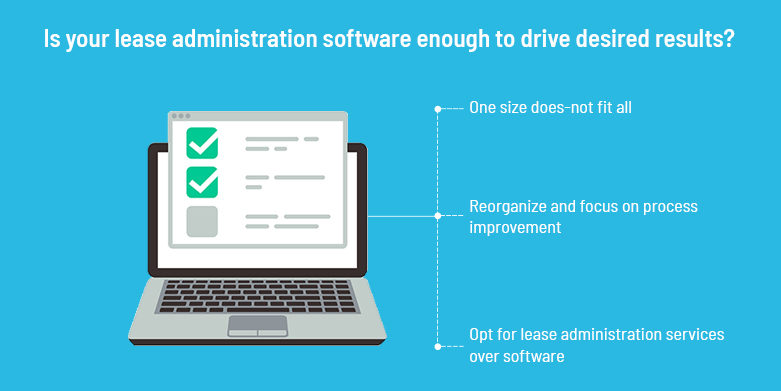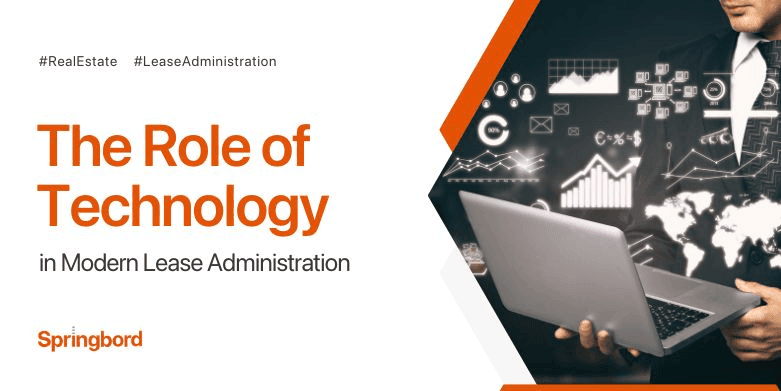 Read time 3 min
Read time 3 minAre you struggling to keep track of your leases and their terms? Do you find yourself buried under piles of paperwork and endless spreadsheets? If so, it’s time to gain a clear understanding of the lease administration process.
In this article, we will provide an overview of the lease administration process and explain how Springbord can help businesses streamline this process.
What is lease administration?
Lease administration is the process of managing lease agreements between a landlord and a tenant. This process includes tasks such as lease abstracting, lease data management, lease auditing, lease compliance, and lease accounting.
The purpose of lease administration is to ensure that lease agreements are being managed effectively and efficiently. This process involves a lot of time and effort, and it can be quite challenging for businesses to manage on their own.
The Importance of Lease Administration:
Effective lease administration is essential for operating smoothly and efficiently. It helps to minimize risk and ensure compliance with lease terms, which can help prevent legal disputes and avoid costly penalties.
Proper lease administration can also help businesses optimize their use of the real estate, reduce occupancy costs, and improve their bottom line.
Lease administration involves a range of activities, including lease data management, rent payments and reconciliation, lease accounting, lease audit, and reporting. These activities are critical to maintaining accurate and up-to-date lease information, ensuring that rent payments are made on time, and providing visibility into lease obligations and financial performance.
The Lease Administration Process:
The lease administration process typically begins with involves collecting and organizing lease information, including lease terms, rent payments, and other important lease-related data.
The information is typically stored in a centralized database, which can be accessed by authorized personnel across the organization.
Lease abstracting
The information included in a lease agreement can be abstracted and entered into a database through a process known as “lease abstracting.” This information includes the lease start and end dates, the rental rate, the security deposit, and any other important terms and conditions of the lease. This information is then used for lease data management and lease accounting.
Once the lease data has been collected and organized, the next step is to manage rent payments and reconciliation. This involves ensuring that rent payments are made on time and accurately reflect the terms of the lease. It also involves reconciling rent payments against the lease agreement to ensure that there are no discrepancies.
Lease accounting is another important aspect of lease administration. This involves maintaining accurate accounting records for leases, including lease amortization, rent expense, and lease liability. Lease accounting is essential for ensuring compliance with accounting standards, such as ASC 842 and IFRS 16, and for providing accurate financial reporting.
A lease audit is another critical component of the lease administration process. This involves reviewing lease agreements to ensure that they comply with lease terms and applicable laws and regulations. Lease audits can help identify potential risks and opportunities for cost savings and can help prevent legal disputes.
Reporting is the final stage of the lease administration process. This involves generating reports that provide visibility into lease obligations and financial performance. Reports can be customized to meet the specific needs of the organization and can be used to inform decision-making and strategic planning.
How Springbord Can Help:
Springbord can manage the lease administration process more efficiently and effectively. We offer a range of services that can help businesses streamline lease data management, rent payments and reconciliation, lease accounting, lease audit, and reporting.
Our lease administration services are designed to meet the specific needs of each client. We partner with our customers to learn about their business goals so that we can provide them with tailored solutions. Our team of experienced professionals has the expertise and knowledge needed to manage complex lease portfolios and ensure compliance with accounting standards and lease terms.
Our lease administration services can help businesses reduce occupancy costs, optimize real estate use, and improve financial performance. We can help businesses identify opportunities for cost savings and negotiate lease terms that are more favorable to their business objectives. Our services can also help businesses avoid legal disputes and comply with applicable laws and regulations.
Conclusion:
Lease administration is a critical function for any business that leases or owns real estate. It involves the management of all aspects of the lease, including lease negotiations, rent payments, lease renewals, and compliance with lease terms.
The process is complex and time-consuming, and without proper management, it can lead to missed payments, lease violations, and legal disputes.
Springbord is a leading company in the field of lease administration services. The company provides a wide range of services to help businesses effectively manage their lease agreements. These services include lease abstracting, lease data management, lease auditing, lease compliance, and lease accounting.







